CAC Coins For Less Than $150 Each, Part 1: Copper
Most collectors are unaware that a significant number of CAC approved coins have publicly sold for amounts between $50 and $150.
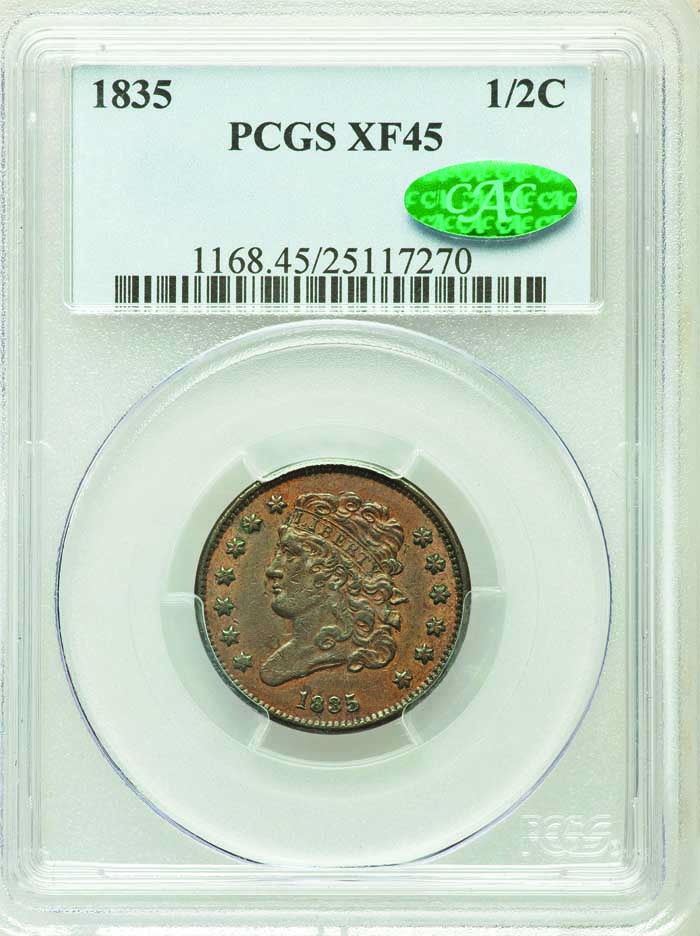
1835 Classic Head half cent graded PCGS XF45 with a CAC sticker. (Images courtesy of Heritage Auctions, www.ha.com)
At times, I hear that some collectors are upset that they cannot afford to buy CAC approved coins, or do not wish to spend a lot of money on CAC coins before deciding “what to collect next!” Most collectors are unaware, however, that a significant number of CAC approved coins have publicly sold for amounts between $50 and $150.
The point here is not that sets of CAC approved coins may be completed without spending more than $150 on any one coin. Indeed, I am not saying that at all.
The emphasis is on the idea that buying CAC approved coins for less than $150 each may be a valuable educational endeavor, and may be fun, too. Collectors can learn about grading and learn about series that they may decide to collect in the future. Rather than just talk or read about CAC approved coins in various series, it is potentially beneficial to carefully view the coins themselves.
CAC approved nickel and silver coins are also available for less than $150 each. There is a limit, though, to the material that can be covered in one discussion. The theme here is to show evidence and provide examples of the many CAC approved copper coins that publicly sold for less than $150 each over the last few years. Undoubtedly, many more sold privately at coin shows, in coin shops and by mail order.
I aim to convey an idea of the kinds of CAC approved coins that have sold for less than $150 each. While the scope and range of CAC coins in this price category are surprising, at least to me, it is important for prospective buyers to have realistic expectations. Only a small percentage of CAC approved coins have sold for less than $150 each, and there are not a large number available at any one point in time. Patience is likely to be required.
Of course, I realize that most collectors will make their own decisions in the contexts of their own tastes, preferences, interests and collecting budgets. It is hoped that this discussion provides ideas and information that will help coin buyers make decisions that will lead to satisfaction, success and enjoyment regarding their own collecting projects.
For clarity, I define copper coins as those that are at least 90% copper. U.S. half cents and large cents were intended to be 100% copper or nearly so. Starting at some point in 1864, Indian cents and Two Cent pieces were specified to be 95% copper. Except for 1943 steel cents, all Lincoln cents minted before 1982 were intended to be 95% copper.
While the term ‘French Bronze’ refers to items that are 95% copper with the balance being tin and zinc, this definition is itself confusing as the portions of tin and zinc are not specified and there other credible definitions of the term bronze, some of which are inconsistent with the definition of ‘French Bronze.’ Moreover, definitions of bronze and brass overlap. It is logical to use the term copper to refer to bronze or brass coins that are at least 95% copper.

A lovely, affordable 1909 Lincoln cent graded NGC MS65 with a CAC sticker.
I am not dwelling on vocabulary or on copper as a metal. The focus here is on the idea of buying inexpensive, CAC approved coins for enjoyment and/or for use as educational tools regarding future quests, which may be very costly. Collectors are encouraged to learn about areas outside of their current respective interests.
According to the CPG®-CAC price guide, there are more than a few CAC approved half cents that have estimated retail values below $100. Of course, price guides are intended to be helpful in a general way, and it should not be assumed that a corresponding actual coin is being offered for sale for each of the prices listed in current guides.
The CPG®-CAC guide indicates that a CAC F12 1809 half cent may retail for $92 and a VF20 1809 for $97. In theory, these are or could be reflective of excellent purchases by fortunate collectors. Unfortunately, however, CAC has approved zero 1809 half cents as F12, zero as F15 and just one as VF20. The sole CAC VF30 1809 is estimated to have a retail value of $101. Is the owner willing to sell it?
In the CPG®-CAC guide, 1826 half cents graded below VF30 are valued at less than $100 each, yet there are no CAC approved 1826 half cents in grades below VF30. Perhaps it would be beneficial to collectors if more circulated half cents were submitted to CAC?
On August 16, 2020, GreatCollections sold a CAC F12 1828 Twelve Stars variety half cent for $129.38. On June 17, 2018, GreatCollections sold a CAC XF40 1832 half cent for $92.63. On May 20, 2020, Stack’s-Bowers sold a CAC approved AU55 grade 1851 Braided Hair half cent for $132.
CAC approved early large cents that sell for less than $150 are not of amazing quality. On April 14, 2019, GreatCollections sold a CAC approved AG3 1801 large cent, of the variety where 1/100 accidentally was punched as 1/000, for $140.62.
On March 20, 2020, Stack’s-Bowers sold a CAC approved Poor-01 1802 large cent from the Pogue Family Collection for $132. This must have been a good deal, a historic date, CAC approval and the Pogue pedigree, all for $132!
Back on October 20, 2013, GreatCollections sold a CAC approved Fair-02 grade 1808 large cent for $36.63. On October 30, 2016, GreatCollections sold a CAC AU58 1852 large cent for $115.50. In January 2018, Heritage sold a CAC VF30 1852 large cent for $61.
There are many inexpensive Bronze Indian cents around, which date from 1864 to 1909, though most of the low-cost pieces have never been sent to CAC. A large part of a CAC-only set could be assembled without spending more than $150 on any one Indian cent.
On August 11, 2019, GreatCollections sold a CAC MS63 1864 Bronze Indian cent for $130.50. In April 2016, Stack’s-Bowers sold a CAC MS63 1865 Indian cent for $111.63.
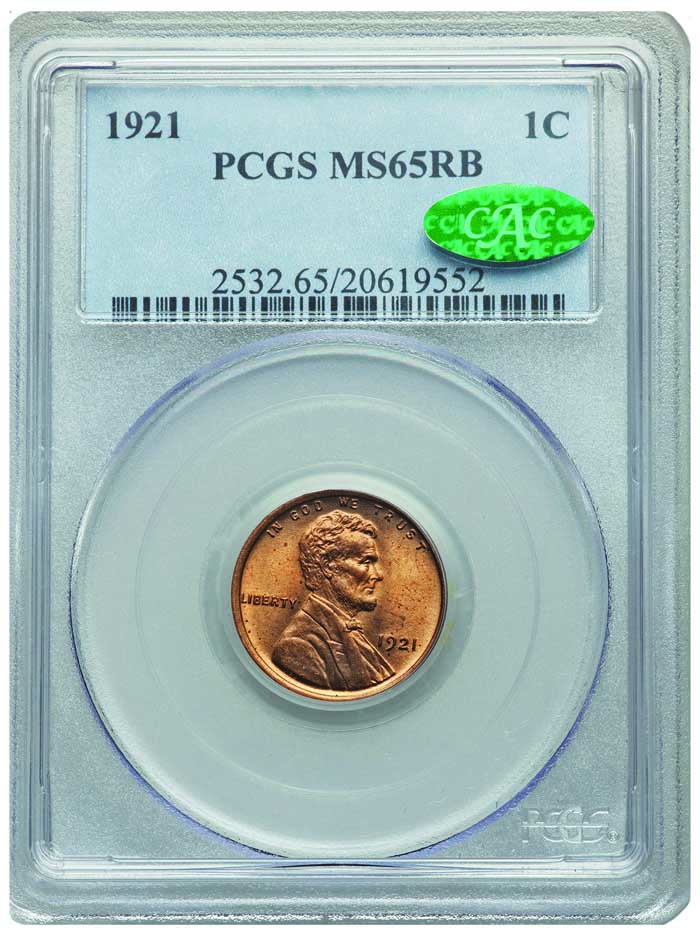
A choice, nearly full-red 1921 Lincoln cent graded PCGS MS65 Red-Brown (RB) with CAC sticker.
On December 4, 2016, Great Collections sold a CAC XF40 1874 Indian cent for $86.90. On January 9, 2018, Heritage sold a CAC XF45 1875 cent for $94. On April 26, 2020, GreatCollections sold a CAC MS61 1884 cent for $70.88.
On February 18, 2020, Stack’s-Bowers sold a CAC MS63 1884 Indian cent for $100. On June 13, 2019, Stack’s-Bowers sold a CAC MS63RB 1887 cent for $132.
On August 18, 2019, GreatCollections sold a CAC MS64 1889 cent for $113.62. On May 3, 2017, Stack’s-Bowers sold a CAC MS63 1891 Indian cent for $85. On June 2, 2019, GreatCollections sold a CAC MS62 1894 cent for $90.
On February 6, 2020, Heritage sold a CAC approved MS63RB 1898 Indian cent for $77. On September 23, 2018, GreatCollections sold a CAC MS63 1899 with a ‘Red & Brown’ (RB) designation, for $86.06.
On June 17, 2018, GreatCollections sold a CAC MS64 1901 for $54.87. In March 2019, Heritage sold a CAC MS63RB 1904 cent for $94. On December 24 2017, Heritage sold a CAC MS64 1908 cent for $65. On February 18, 2020, Stack’s-Bowers sold a CAC approved MS64RB 1909 Indian cent for $110.
Among Lincoln cents, it makes sense to refer to CAC approved coins minted before 1934. Generally, uncirculated coins minted after 1934 survive in very large quantities. The premiums for superb quality condition rarities of extremely common coins constitute a different topic, beside the theme here.
On July 11, 2018, Heritage sold a CAC approved, PCGS graded MS65 1909 VDB Lincoln cent with a full red (RD) designation for $89. It may be educational to see some red color on an early Lincoln, which experts at CAC find to be original. Original shades of red, though, are different on different Lincoln cents depending upon the year minted and means of storage since then.
On January 23, 2018, Heritage sold a CAC approved, PCGS graded 1909 VDB Lincoln cent with a red & brown (RB) designation for $74. As a one-year subtype and the first issue of Lincolns, 1909 VDB Lincolns are especially significant.
On June 14, 2020, a CAC approved MS64 1909 Lincoln with a full red designation brought $59.34 in a GreatCollections sale. This of the subtype without VDB on the reverse.
On September 27, 2020, GreatCollections sold a CAC approved, NGC certified MS64RB 1910 for $85.24. Original red color on a 1910 Lincoln cent is typically different from original red color an a 1909 Lincoln cent.
On June 28, 2020, GreatCollections sold a CAC MS63RB 1913 for $124.88. On February 18, 2020, Stack’s-Bowers sold a CAC approved AU50 1914-S Lincoln for $85. Though not as important as a 1914-D, a 1914-S is clearly a better date and not a date that Lincoln cent collectors expect to find at every major coin show.
On July 31, 2019, Stack’s-Bowers sold a CAC approved MS65BN 1916 cent for $120. On September 20, 2020, GreatCollections sold a CAC AU58 1916-D cent for $85.50. In June 2017, the Goldbergs auctioned a CAC stickered, PCGS certified MS65RB 1919 cent for $76.
The 1924-D is somewhat famous date. On June 28, 2020, GreatCollections sold a CAC XF40 1924-D Lincoln cent for $88.05. When I was around nine years old, I searched dealer display cases at shows for a 1924-D. I remember being concerned about the cost of any 1924-D that I might find.
On January 24, 2018, Stack’s-Bowers auctioned a CAC approved AU50 grade 1931-S Lincoln for $85. When I was eight and when I was nine years old, I collected Lincoln cents in low grades, as did several of my friends. In G4 grade or so, the three keys were the 1909-S VDB, the 1914-D and the 1931-S.
1922 plain was considered an oddity by kids who I knew when I was nine years old. Furthermore, the 1922 plain was difficult to appreciate in a low grade, as both the 1922 ‘Plain’ and the 1922-D are characterized by weakly struck obverses. Also, doubled dies were then considered errors that were not required for general sets.
The 1931-S was one of the big three, given our objectives. Of course, we knew that several other dates were scarcer than the 1931-S in higher grades, especially in uncirculated. We were happy to obtain better date Lincolns in any grade.
To collectors who I knew when I was a kid, the 1931-S was extremely important. Now, a CAC approved 1931-S for less than $100 may have symbolic significance and sentimental value for collectors who remember building sets of Lincoln cents, decades ago.
When I was a kid, no one who I knew collected Two Cent pieces, though these are neat and not extremely expensive. Most have not been submitted to CAC. A few CAC approved Two Cent pieces could, in theory, be purchased for less than $150 each.
On July 28, 2019, GreatCollections sold a CAC approved AU58 grade 1864 Large Motto coin for $88.74. On December 8, 2019, a CAC approved, NGC graded AU58 1865 Two Cent piece sold for $86.91. Back in November 2013, Heritage sold a CAC approved AU53 grade 1867 for $98.70.
In the CPG®-CAC price guide, there are listed numerous CAC approved Two Cent pieces valued at well under $100, but have populations of zero. If more collectors intensely demand CAC approved coins in general that cost less than $150 each, many PCGS or NGC graded coins around that are currently worth less than $150 will be sent to CAC to meet such increased demand.
Even if CAC populations of coins currently worth less than $150 each were to markedly increase, it would still be true that collectors focusing on CAC approved, classic U.S. (pre-1934) coins should plan on spending much more than $150 in most instances. Buying some CAC approved coins for less than $150 each could be fun and may help collectors prepare in case they feel like moving on to new projects in the future.
©2020 Greg Reynolds
Insightful10@gmail.com

Download the Greysheet app for access to pricing, news, events and your subscriptions.
Subscribe Now.
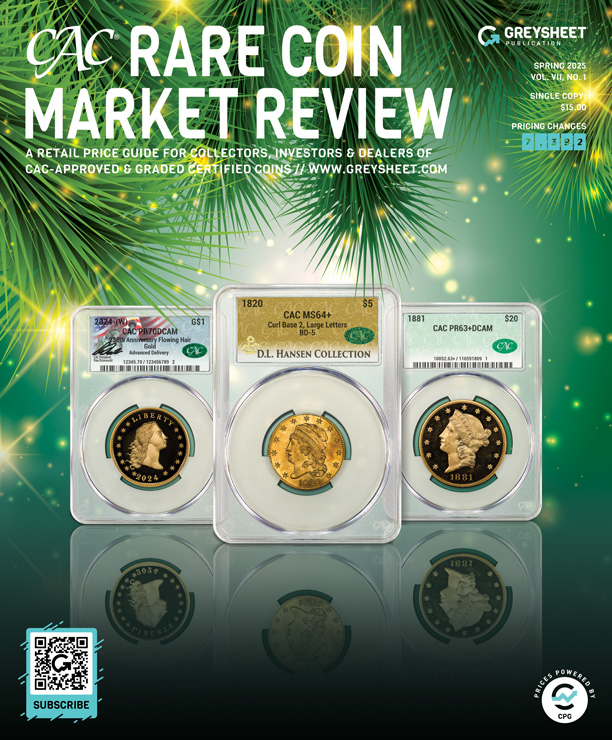
Subscribe to CAC Rare Coin Market Review for the industry's most respected pricing and to read more articles just like this.
Source: Greg Reynolds
Related Stories (powered by Greysheet News)
View all news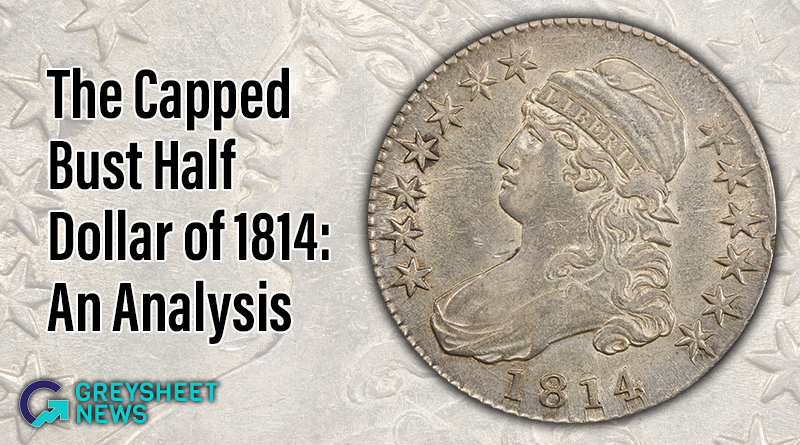
In this article Greg Reynolds analyzes the 1814 Capped Bust Half Dollar.
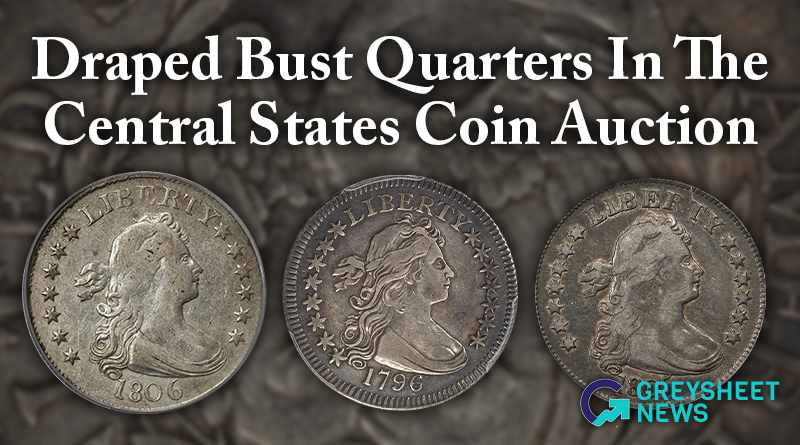
The Lusk set of Draped Bust quarters brought strong results.
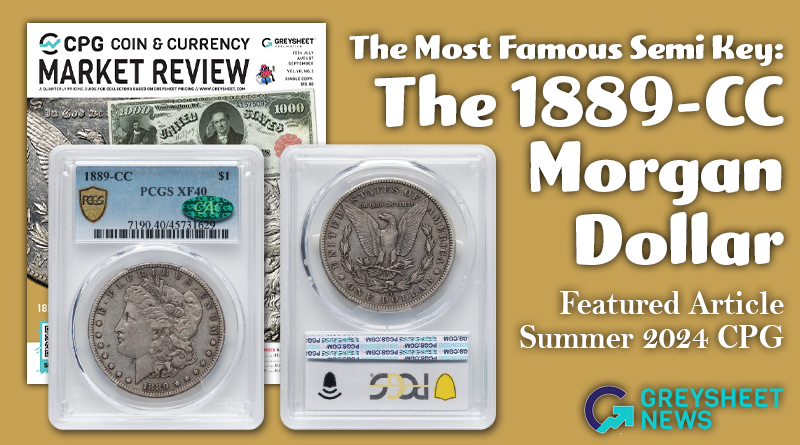
The 1889-CC is the second scarcest business strike in the series.


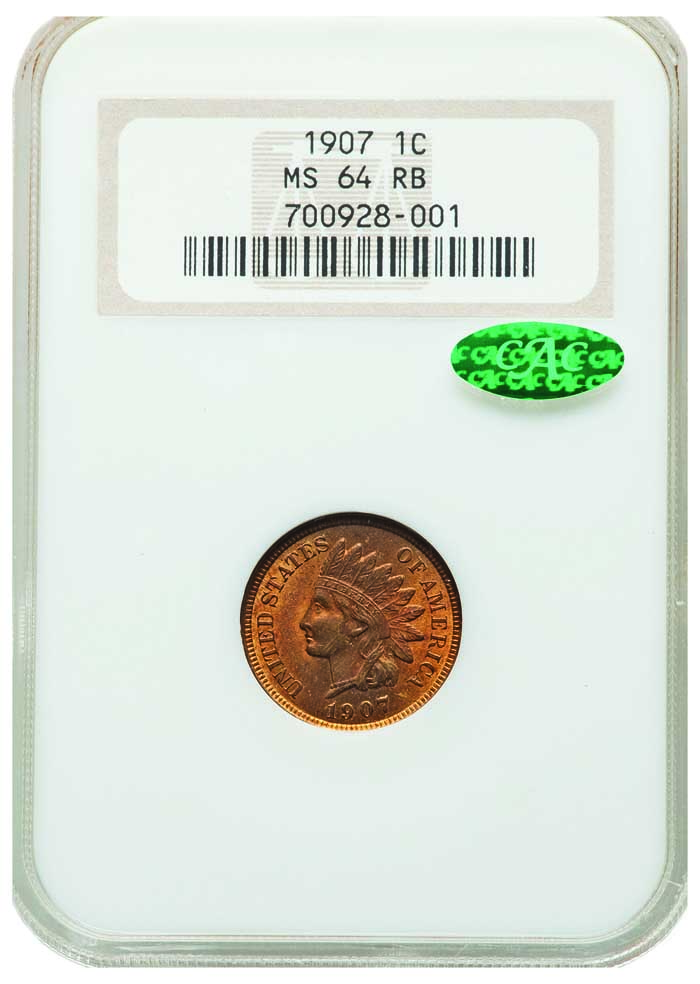






Please sign in or register to leave a comment.
Your identity will be restricted to first name/last initial, or a user ID you create.
Comment
Comments